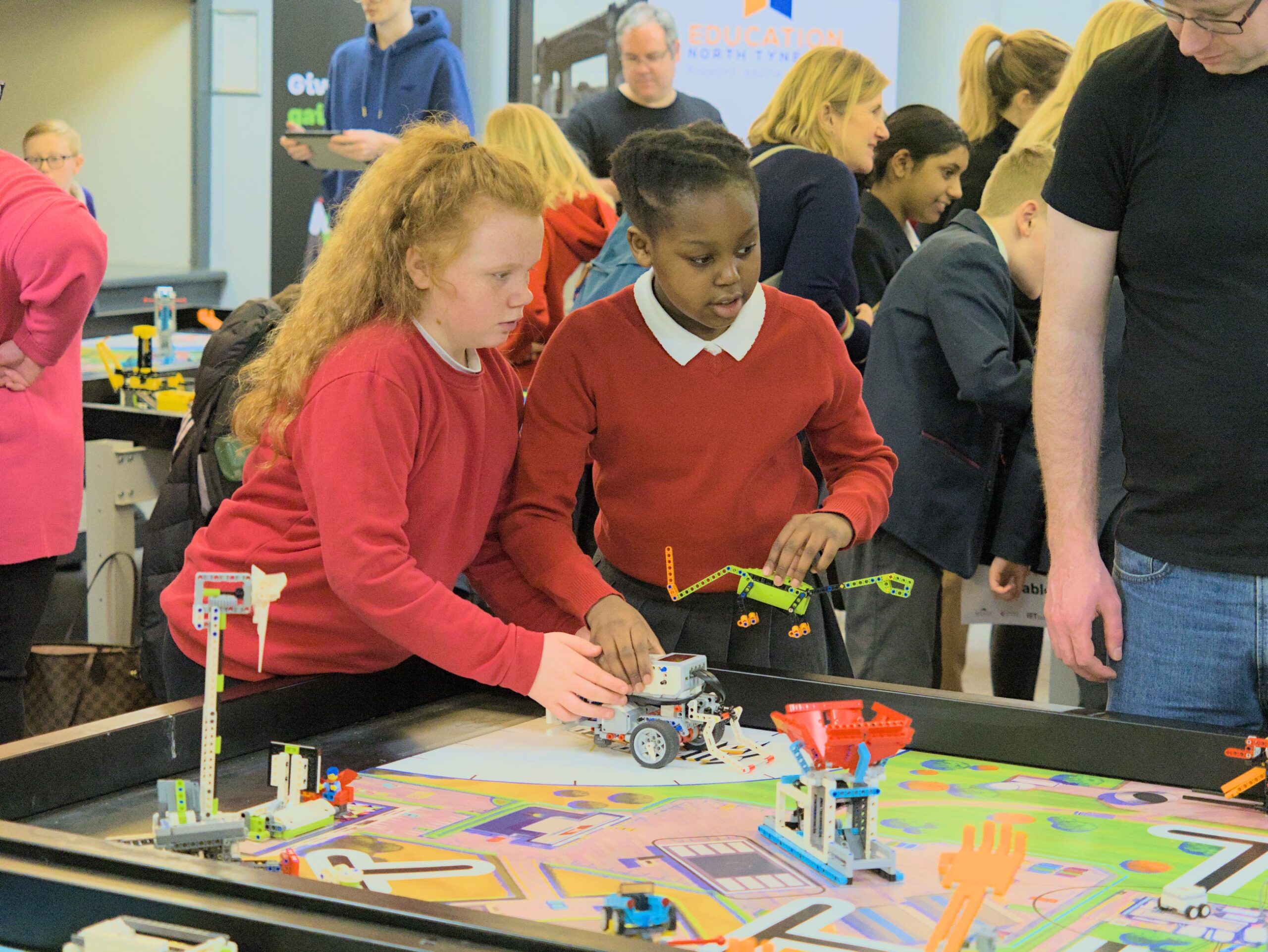Addressing the gender imbalance in STEM subjects
Still only 24% of people working in the Tech Industry are women. The underrepresentation of women and girls in STEM (Science, Technology, Engineering, and Mathematics) subjects remains a significant challenge in the UK. Despite some progress, females continue to be outnumbered by males in both STEM education and careers.

UK Exam results 2024
This year, more males and females took STEM GCSE subjects. Male entries were up by 4.5% and female entries by 5.1%. Females represented 47.9% of STEM entries overall, which was small increase from 2023.
While female entries in some STEM subjects are strong, other subjects continue to suffer from a big gender imbalance, yet female students continue to outperform their male counterparts across the STEM subjects. 28.2% of female entries received a grade 7 or above, compared to 25.3% of male entries.
% of female entries into GCSE STEM subjects in 2024:
- mathematics 50%,
- science - double award 49.8%,
- chemistry 48.9%,
- design and technology 31.2%,
- computing 21.9%
- engineering 16.3%
At A-level, there is still a gap between male and female entries for core-STEM subjects with male entries increasing considerably this year. Core-STEM subjects accounted for 30.3% of all female A-Level entries, compared to 47.7% for male A-Level entries. This is an increase for both female and male entries. You can see a really detailed breakdown of this year’s STEM A-level results and gender trends at wisecampaign.org.uk.

Barriers to Participation
A number of factors continue to contribute to the low participation of girls in STEM subjects:
- Stereotypes and Cultural Perceptions: Persistent stereotypes portray STEM fields as male-dominated, deterring girls from pursuing these subjects.
- Lack of Role Models: A scarcity of female role models in STEM careers can lead to a lack of aspiration among young girls.
- Educational Environment: Teaching methods and a curriculum that doesn’t engage or inspire girls can diminish their interest.
- Confidence Gap: Girls often underestimate their abilities in STEM subjects, affecting their willingness to continue studying these fields.
Strategies for Improvement
But there are signs of change! Lots of passionate organisations out there doing fantastic work to encourage and support greater female representation in STEM, as well as other minorities that are also under-represented in STEM subjects and careers.
A collaborative approach between the education sector and the STEM industry is essential to bridge this gender gap and a range of strategies will help to tackle this issue:
1. Early Engagement
Introduce STEM concepts through interactive and relatable activities in primary education to spark interest among young girls.
Organisations like the Micro:bit Educational Foundation and The Institution of Engineering and Technology (IET) create fantastic creative content with broad and varied themes that will appeal to all children and show that tech can take you to many different places and applications in the real-world. Resources like these will help to spark an interest in STEM from an early age.

FIRST® LEGO® League
Take a look at the IET’s case study: FIRST® LEGO® League: Demonstrating STEM career pathways for young girls
The IET's biggest STEM education programme is FIRST® LEGO® League; an amazing global STEM programme with three age divisions that introduces children from 4 to 16 years of age to STEM learning with real-world contexts and challenges. The IET constantly champion female participation and representation in all that they do, and their last impact report showed 45% of participants in FIRST® LEGO® League in the UK to be girls, something we saw reflected in our regional FIRST® LEGO® League events for North Tyneside and Northumberland last year (44%). These amazing programmes show every child how interesting and fun engineering can be, and girls are a huge part of it!
2. Curriculum Development
Ensure that our STEM curriculums are inclusive, highlighting contributions from female scientists and engineers to provide relatable role models to young girls everywhere.
The Government’s Curriculum and Assessment review is underway, (the consultation period has now closed). We hope that a new version of the National Curriculum will be adventurous and inclusive and provide educators with the tools to encourage and support girls in STEM subjects, challenge stereotypes and build confidence.
3. Mentorship Programs
Establish mentorship opportunities connecting female students with women professionals in STEM to provide guidance and inspiration.
The fabulous InnovateHer are “on a mission to get girls ready for the Tech industry and the Tech industry ready for girls”.
They provide FREE programmes for schools including teaching resources for educators, assemblies, career talks and videos, online courses. They also run an ambassador programme and Partner Role Models to connect girls in schools with female experts in the tech industry nationally or regionally.
4. Industry Partnerships
Collaborate with STEM industries to offer internships, workshops, and real-world problem-solving experiences for female students.
There are lots of great companies now recognising this issue and supporting initiatives to address it. Especially here in the North East. We are proud to work with Sage on a number of projects, and they recently ran EmPowerCyber, where 1,200 schoolgirls from across the North East took part in a two-day event, hosted by Newcastle United Foundation. Over 40 companies and organisations attended, including local employers like Aspire Technology Sevices, Newcastle Building Society, Nissan and Northumbrian Water, alongside national and global names such as the RAF, Palo Alto, Opencast, and GCHQ’s CyberFirst team. Together, they delivered immersive, hands-on workshops, including codebreaking, hacker training, programming, escape rooms, and crisis response simulations.
Journalist and presenter, Charlie Charlton summed up the impact the day had:
“At the start of this EmpowerCyber day, an audience of 500 teenaged girls were asked "how many of your would consider a future in STEM?" 8 people put their hands up.
After experimenting with robots, coding, VR, logic puzzles, safecracking, escape rooms and loads more, I then asked them the same question. At least 100 hands flew in the air.
The brilliant minds of these Year 8 students were opened up to new worlds, new possibilities by people who are passionate about their work and inspiring our region's children and future workforce.”
Events like this are amazing for opening the eyes of young people to the tech careers that are out there and giving them confidence that a career in tech really could be for them, whoever they are.
5. Awareness Campaigns
Promote the diverse career opportunities within STEM fields to dispel myths and broaden perceptions among students and parents.
A number of successful programs have been implemented to encourage girls in STEM:
- InnovateHer: A UK-based social enterprise who aim to get more girls interested in the technology industry.
- WISE Campaign: A UK-based organization that encourages women and girls to pursue STEM-related courses and careers.
- Code First Girls: Provides free coding courses to women and non-binary people across the UK, aiming to increase female participation in the tech sector.
Addressing the gender disparity in STEM is vital for fostering innovation and economic growth in the UK, adn we all have a role to play. Through concerted efforts in education and industry collaboration, we can create an environment where girls are empowered to pursue and thrive in STEM careers, benefiting society as a whole.


